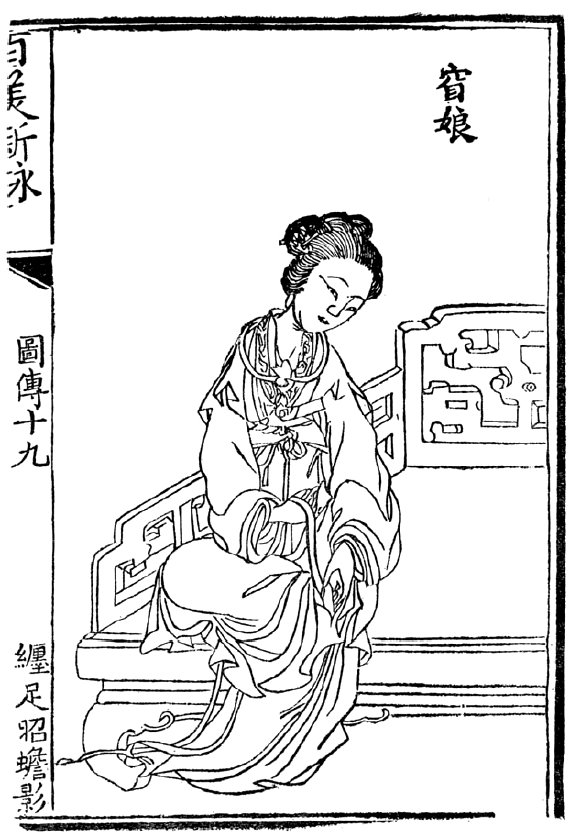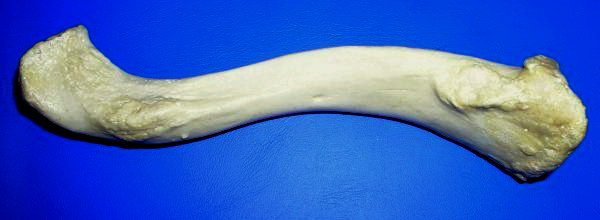|
Neck Ring
Neck rings, or neck-rings, are any form of stiff jewellery worn as an ornament around the neck of an individual, as opposed to a loose necklace. Many cultures and periods have made neck rings, with both males and females wearing them at various times. Of the two most notable types, one is the torc, an often heavy and valuable ornament normally open at the throat. These were worn by various early cultures but are especially associated with the ancient Celts of the European Iron Age, where they were evidently a key indicator of wealth and status, mostly worn by men. The other type is one or more spiral metal coils of many turns, often worn only by married women. Illusion of elongation In a few African and Asian cultures, neck rings are worn usually to create the appearance that the neck has been stretched. The custom of wearing neck rings is related to an ideal of beauty: an elongated neck. Neck rings push the clavicle and ribs down. [...More Info...] [...Related Items...] OR: [Wikipedia] [Google] [Baidu] |
Kayan Woman With Neck Rings
Kayan may refer to: Ethnography * Kayan people (Myanmar) * Padaung language * Kayan people (Borneo) * Kayan language (Borneo), dialect cluster spoken in Borneo * Kayan–Murik languages, group of Austronesian languages that includes the Kayan dialect cluster Geography * Kayan, Baghlan, town in Baghlan Province, Afghanistan * Kayan, Armenia, town in Armenia * Kayan, Iran, city in Iran * Kian, Iran * Kian, Isfahan, Iran * Kayan, Ergani Kayan is a village in the Ergani District of Diyarbakır Province in Turkey. References Villages in Ergani District {{Ergani-geo-stub ... Other * Kayan (musician), Indian musician {{Disambiguation, geo Language and nationality disambiguation pages ... [...More Info...] [...Related Items...] OR: [Wikipedia] [Google] [Baidu] |
Intervertebral Disc
An intervertebral disc (or intervertebral fibrocartilage) lies between adjacent vertebrae in the vertebral column. Each disc forms a fibrocartilaginous joint (a symphysis), to allow slight movement of the vertebrae, to act as a ligament to hold the vertebrae together, and to function as a shock absorber for the spine. Structure Intervertebral discs consist of an outer fibrous ring, the anulus fibrosus disci intervertebralis, which surrounds an inner gel-like center, the nucleus pulposus. The ''anulus fibrosus'' consists of several layers (laminae) of fibrocartilage made up of both type I and type II collagen. Type I is concentrated toward the edge of the ring, where it provides greater strength. The stiff laminae can withstand compressive forces. The fibrous intervertebral disc contains the ''nucleus pulposus'' and this helps to distribute pressure evenly across the disc. This prevents the development of stress concentrations which could cause damage to the underlying vertebr ... [...More Info...] [...Related Items...] OR: [Wikipedia] [Google] [Baidu] |
Genital Cutting (other)
Genital cutting refers to genital modification and mutilation of the human genitals using a cutting instrument. This terminology is often used in some literature specifically to avoid using the terms 'mutilation' or 'circumcision'. These practices can include: * Castration * Circumcision (male) * Clitoridectomy * Female genital mutilation (FGM) * Penectomy * Labiaplasty * Penile subincision * Penile superincision * Sex reassignment of intersex children * Vaginoplasty Vaginoplasty is any surgical procedure that results in the construction or reconstruction of the vagina. It is a type of genitoplasty. Pelvic organ prolapse is often treated with one or more surgeries to repair the vagina. Sometimes a vaginopl ... {{DEFAULTSORT:Genital Cutting Genital modification and mutilation ... [...More Info...] [...Related Items...] OR: [Wikipedia] [Google] [Baidu] |
Foot Binding
Foot binding, or footbinding, was the Chinese custom of breaking and tightly binding the feet of young girls in order to change their shape and size. Feet altered by footbinding were known as lotus feet, and the shoes made for these feet were known as lotus shoes. In late imperial China, bound feet were considered a status symbol and a mark of feminine beauty. However, footbinding was a painful practice that limited the mobility of women and resulted in lifelong disabilities. The prevalence and practice of footbinding varied over time and by region and social class. The practice may have originated among court dancers during the Five Dynasties and Ten Kingdoms period in 10th-century China, and gradually became popular among the elite during the Song dynasty. Footbinding eventually spread to lower social classes by the Qing dynasty (1636–1912). Manchu emperors attempted to ban the practice in the 17th century, but failed. In some areas, footbinding raised marriage prospects. I ... [...More Info...] [...Related Items...] OR: [Wikipedia] [Google] [Baidu] |
South Ndebele People
AmaNdebele are an Mbo ethnic group native to South Africa who speak isiNdebele language. AmaNdebele mainly inhabit the provinces of Mpumalanga, Gauteng and Limpopo, all of which are in the northeast of the country. Although both are part of the larger Mbo ethnic group, the South African Ndebele should not be confused with the AbaThwakazi of Zimbabwe who are a more recent offshoot of the Zulu. The amaNdebele are related to and considered part of the same nation as the maNdrebele who inhibit parts of Limpopo and Northwest provinces. The maNdrebele are constituted by three major tribes namely Gheghana, Mghumbhani and Mtjhatjhani. Both the amaNdebele and maNdrebele are descendants of the same ancestral king called Musi kaMhlanga. AmaNdebele are popular of their history with the Ndebele-Boer War of 1883. During the ruling of Nyabela in the Transvaal in Mpumalanga, amaNdebele were entangled in a war with Boers for hiding Kgosi Mampuru of the Pedi people and the tribal war is kn ... [...More Info...] [...Related Items...] OR: [Wikipedia] [Google] [Baidu] |
Ndebele Women-1
Ndebele may refer to: *Southern Ndebele people, located in South Africa *Northern Ndebele people, located in Zimbabwe and Botswana Languages *Southern Ndebele language, the language of the South Ndebele *Northern Ndebele language Northern Ndebele (), also called Ndebele, isiNdebele saseNyakatho, Zimbabwean Ndebele or North Ndebele, associated with the term Matabele, is a Bantu language spoken by the Northern Ndebele people which belongs to the Nguni group of languages. ..., the language of the Northern Ndebele See also * Matabele (other) {{disambiguation Language and nationality disambiguation pages ... [...More Info...] [...Related Items...] OR: [Wikipedia] [Google] [Baidu] |
Thailand
Thailand ( ), historically known as Siam () and officially the Kingdom of Thailand, is a country in Southeast Asia, located at the centre of the Indochinese Peninsula, spanning , with a population of almost 70 million. The country is bordered to the north by Myanmar and Laos, to the east by Laos and Cambodia, to the south by the Gulf of Thailand and Malaysia, and to the west by the Andaman Sea and the extremity of Myanmar. Thailand also shares maritime borders with Vietnam to the southeast, and Indonesia and India to the southwest. Bangkok is the nation's capital and largest city. Tai peoples migrated from southwestern China to mainland Southeast Asia from the 11th century. Indianised kingdoms such as the Mon, Khmer Empire and Malay states ruled the region, competing with Thai states such as the Kingdoms of Ngoenyang, Sukhothai, Lan Na and Ayutthaya, which also rivalled each other. European contact began in 1511 with a Portuguese diplomatic mission to Ayuttha ... [...More Info...] [...Related Items...] OR: [Wikipedia] [Google] [Baidu] |
Marco Polo
Marco Polo (, , ; 8 January 1324) was a Venetian merchant, explorer and writer who travelled through Asia along the Silk Road between 1271 and 1295. His travels are recorded in '' The Travels of Marco Polo'' (also known as ''Book of the Marvels of the World '' and ''Il Milione'', ), a book that described to Europeans the then mysterious culture and inner workings of the Eastern world, including the wealth and great size of the Mongol Empire and China in the Yuan Dynasty, giving their first comprehensive look into China, Persia, India, Japan and other Asian cities and countries. Born in Venice, Marco learned the mercantile trade from his father and his uncle, Niccolò and Maffeo, who travelled through Asia and met Kublai Khan. In 1269, they returned to Venice to meet Marco for the first time. The three of them embarked on an epic journey to Asia, exploring many places along the Silk Road until they reached Cathay (China). They were received by the royal court of Kublai Kha ... [...More Info...] [...Related Items...] OR: [Wikipedia] [Google] [Baidu] |
Clavicles
The clavicle, or collarbone, is a slender, S-shaped long bone approximately 6 inches (15 cm) long that serves as a strut between the shoulder blade and the sternum (breastbone). There are two clavicles, one on the left and one on the right. The clavicle is the only long bone in the body that lies horizontally. Together with the shoulder blade, it makes up the shoulder girdle. It is a palpable bone and, in people who have less fat in this region, the location of the bone is clearly visible. It receives its name from the Latin ''clavicula'' ("little key"), because the bone rotates along its axis like a key when the shoulder is abducted. The clavicle is the most commonly fractured bone. It can easily be fractured by impacts to the shoulder from the force of falling on outstretched arms or by a direct hit. Structure The collarbone is a thin doubly curved long bone that connects the arm to the trunk of the body. Located directly above the first rib, it acts as a strut to ... [...More Info...] [...Related Items...] OR: [Wikipedia] [Google] [Baidu] |
Kayan (Burma)
The Kayan are a sub-group of Red Karen (Karenni people), Tibeto-Burman ethnic minority of Myanmar (Burma). The Kayan consists of the following groups: Kayan Lahwi (also called Padaung, ), Kayan Ka Khaung (Gekho), Kayan Lahta, Kayan Ka Ngan. Kayan Gebar, Kayan Kakhi and, sometimes, Bwe people (Kayaw). They are distinct from, and not to be confused with, the Kayan people of Borneo. Padaung (Yan Pa Doung) is a Shan term for the Kayan Lahwi (the group in which women wear the brass neck rings). The Kayan residents in Mae Hong Son Province in Northern Thailand refer to themselves as Kayan and object to being called Padaung. In ''The Hardy Padaungs'' (1967) Khin Maung Nyunt, one of the first authors to use the term "Kayan", says that the Padaung prefer to be called Kayan. On the other hand, Pascal Khoo Thwe calls his people Padaung in his 2002 memoir, ''From the Land of Green Ghosts: A Burmese Odyssey.'' In the late 1980s and early 1990s due to conflict with the military regime ... [...More Info...] [...Related Items...] OR: [Wikipedia] [Google] [Baidu] |
Kayan Lahwi
The Kayan are a sub-group of Red Karen (Karenni people), Tibeto-Burman ethnic minority of Myanmar (Burma). The Kayan consists of the following groups: Kayan Lahwi (also called Padaung, ), Kayan Ka Khaung (Gekho), Kayan Lahta, Kayan Ka Ngan. Kayan Gebar, Kayan Kakhi and, sometimes, Bwe people (Kayaw). They are distinct from, and not to be confused with, the Kayan people of Borneo. Padaung (Yan Pa Doung) is a Shan term for the Kayan Lahwi (the group in which women wear the brass neck rings). The Kayan residents in Mae Hong Son Province in Northern Thailand refer to themselves as Kayan and object to being called Padaung. In ''The Hardy Padaungs'' (1967) Khin Maung Nyunt, one of the first authors to use the term "Kayan", says that the Padaung prefer to be called Kayan. On the other hand, Pascal Khoo Thwe calls his people Padaung in his 2002 memoir, ''From the Land of Green Ghosts: A Burmese Odyssey.'' In the late 1980s and early 1990s due to conflict with the military regime ... [...More Info...] [...Related Items...] OR: [Wikipedia] [Google] [Baidu] |
Karen Padaung Girl Portrait
Karen may refer to: * Karen (name), a given name and surname * Karen (slang), a term and meme for a demanding woman displaying certain behaviors People * Karen people, an ethnic group in Myanmar and Thailand ** Karen languages or Karenic languages * House of Karen, a historical feudal family of Tabaristan, Iran * Karen (singer), Danish R&B singer Places * Karen, Kenya, a suburb of Nairobi * Karen City or Hualien City, Taiwan * Karen Hills or Karen Hills, Myanmar * Karen State, a state in Myanmar Film and television * ''Karen'' (1964 TV series), an American sitcom * ''Karen'' (1975 TV series), an American sitcom * ''Karen'' (film), a 2021 American crime thriller Other uses * Karen (orangutan), the first to have open heart surgery * AS-10 Karen or Kh-25, a Soviet air-to-ground missile * Kiwi Advanced Research and Education Network * Tropical Storm Karen (other) See also * Karren (name) * Karyn (given name) * Keren, Eritrea a city * Caren (disambi ... [...More Info...] [...Related Items...] OR: [Wikipedia] [Google] [Baidu] |






